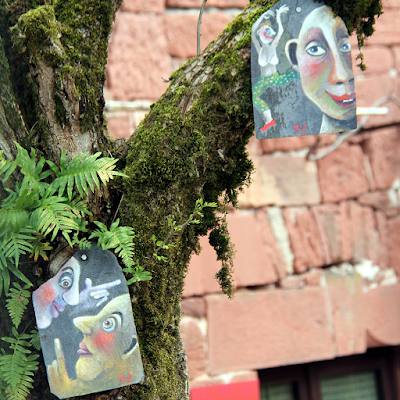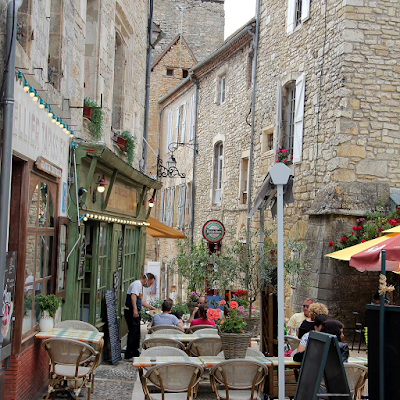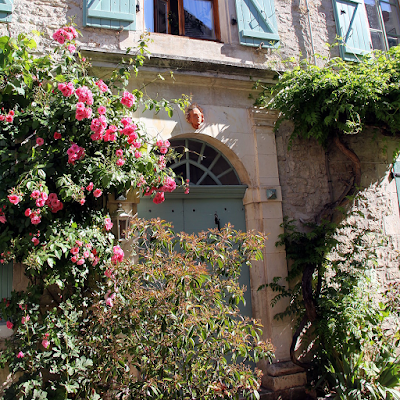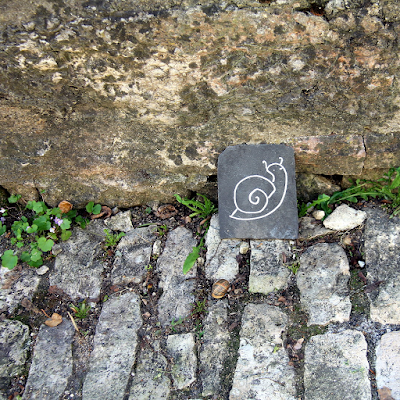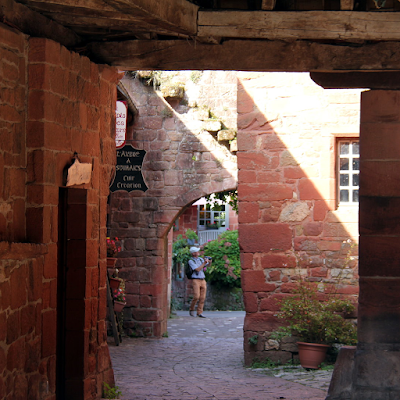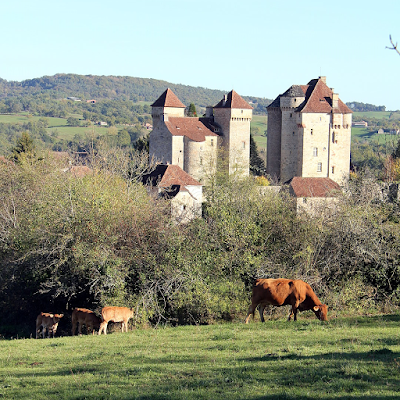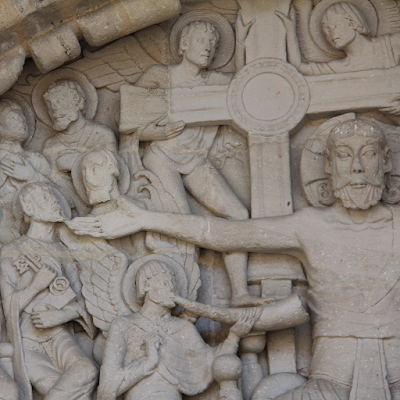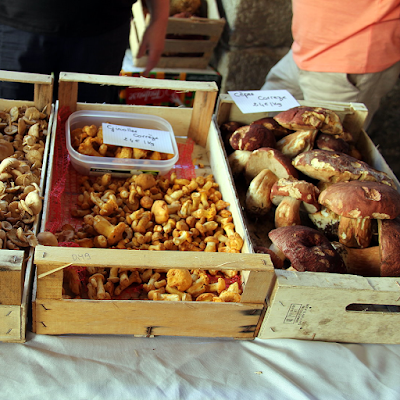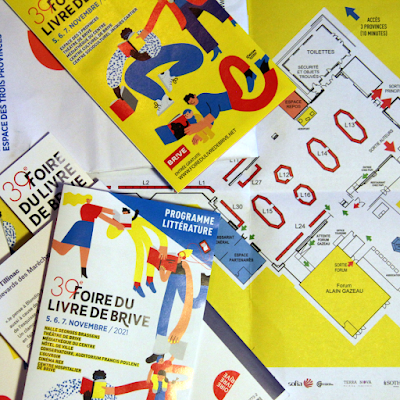 |
|
Autoire deserves its “Plus Beaux Villages de France” label.
|
“In descending from the plateau by the precipices that edge
them, one is suddenly transported from parched wastes to pleasant
pastures... Above, on that stone table, are wind, cold, nakedness,
poverty, moroseness, hideousness, - a void, for few villages are
found aloft; below, orchard land, warmth, gaiety, abundance. The
startling contrast between some of the cañons and their causses
forms one of the most phenomenal beauties of beautiful France.”
Wrote Sabine Baring-Gould (an Anglican priest, antiquarian,
novelist, folk song collector and eclectic scholar), in his 1894
book: The deserts of Southern France: an introduction to the limestone and chalk plateaux of ancient Aquitaine. He found the causses to be ‘veritable deserts: in winter a Siberia; in summer a Sahara…’
 |
|
Nestled at the bottom of the forested valley is the village of
Autoire. |
A year earlier (1893), compatriot Edward Harrison Barker, wrote in his book;
Wanderings by southern waters: Eastern Aquitaine, after taking his ‘sheep-track up the arid steeps’:
“And yet, when
I looked down into the bottom of this steep desert of stones, what soft and vernal beauty was there... just as if that strip of meadow,
with its gently-gliding river, had been lifted out of an English dale and dropped into the midst of the sternest scenery of Southern
France.”
 |
| Autoire can be explored through small alleyways. |
Sadly the ‘epoch when everyone travels’ is
over, but the modern day tourist can nowhere experience the
contrast between the plateau and the valley easier than by hiking the
Autoire ‘cirque’ (circus) with its 150 to 200 m high limestone
cliffs. Shaped by the Autoire stream, grinding its way into the
limestone plateau of the Causse de Gramat through a 30 m high
waterfall (7).
Beautiful and impressive, this majestic waterfall is the first
highlight on a 3 km (2 hour) walk. On your way to the waterfall, stop at the
Chappelle Saint-Roch
(6) and have a quick look at its frescoes through the grilled window.
 |
| The 30 m high waterfall. |
From the waterfall a
steep climb brings you to a viewing area (8) on the edge of
the cliff with great panoramic views of the valley and waterfall. The
hamlet of Siran is home to a farm managing a flock angora goats. The
descend passes the Château des Anglais cliff-castle (9), a
medieval construction enclosing a overhang in the limestone cliff.
Long the home of ‘brigands’, it has commanding views and is
naturally protected on all sides, a closer inspection reveals it is
basically a facade, only two meters deep at the interior.
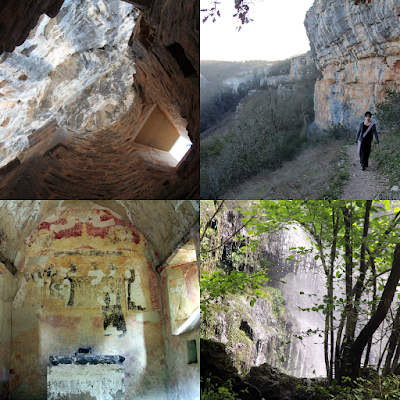 |
| Hiking the Autoire ‘cirque’. |
Nestled at the
bottom of the forested valley is the village of Autoire with its
elegant manor houses flanked by turrets, mansions, castles and
half-timbered houses. The Romanesque church of Saint-Pierre et
Saint-Paul (1) was rebuilt by the end of the 11th and beginning
of the 12th centuries. It was fortified towards the end of the
Hundred Years War, and the bell tower was raised. Covered with a
cupola it has interesting sculpted decorations.
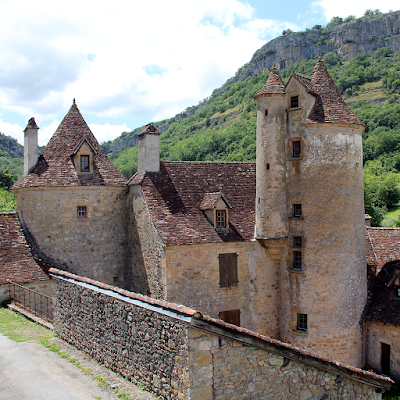 |
| Elegant manor houses flanked by turrets, mansions, castles and half-timbered houses. |
The Fontaine aux Dauphins (2) build by ‘voluntary contributions’ takes center
stage, pass l’ancien couvent (3) and the Chateau de Limargue (4) that obtained the right to build towers and
machicolations after its owner was knighted by King Charles VIII. The door at the bottom of the tower is adorned with a toric arch carved in an accolade, typical of the late 15th century. The second tower,
more imposing, served as a defense tower.
 |
| Map of Autoire and its hike. |
The Manoir de Laroque-Delpratas (5) deserve special mention; owned by a
bourgeois family since 1605 (judges, notaries, lawyers), it preserves its 17th century characteristics: L-shaped plan, stairwell, large
windows and decorated skylights. Small restaurants, and shops promoting local art and gastronomy, can be explored through small
alleyways. Autoire deserves its “Plus Beaux Villages de France” label.
Find out more about the landscape, history, vegetation, the
villages and life on the causse: The index of this blog.










